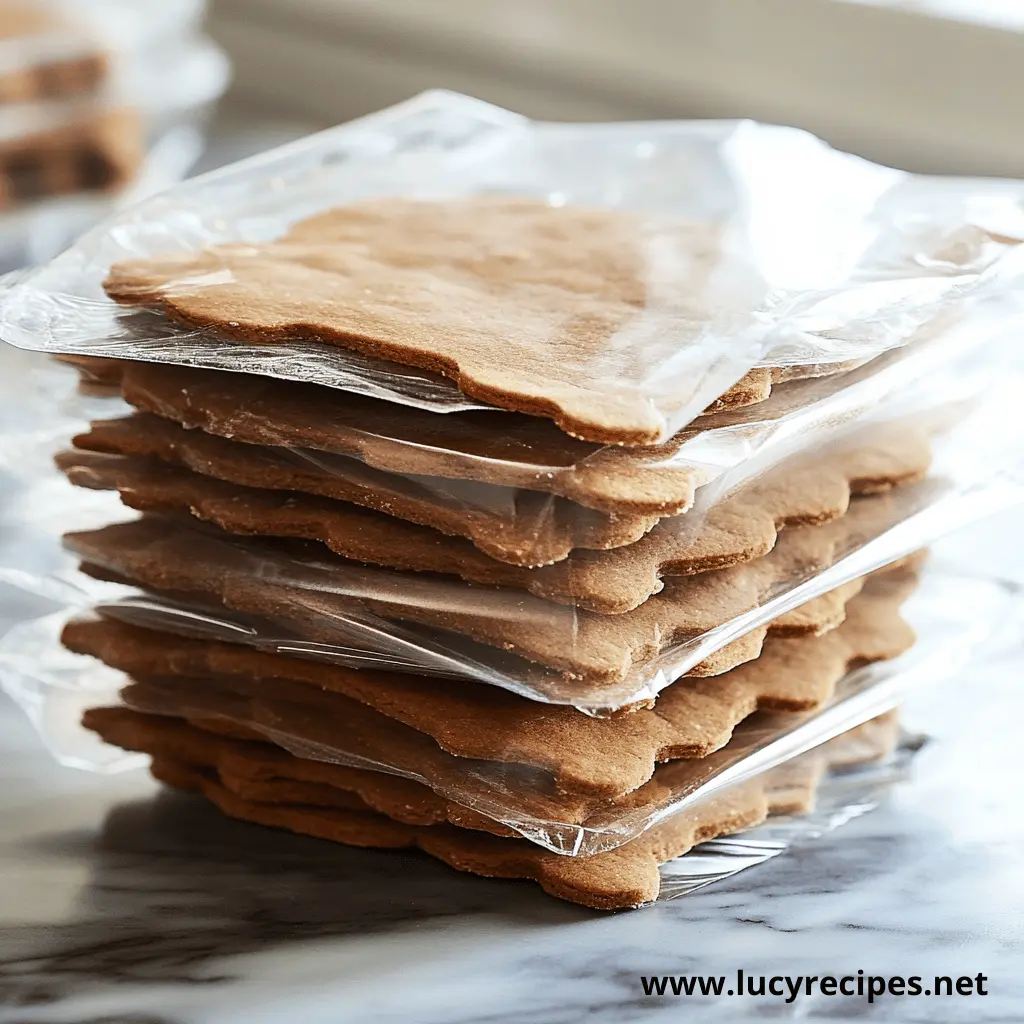Introduction
Gingerbread cookies, especially gingerbread men, are a cherished holiday tradition. However, it can be disheartening to see your meticulously shaped creations crack during or after baking. Understanding the root causes of cracking and how to prevent it can transform your baking experience. This guide answers the pressing question: Why did my gingerbread men crack? We will explore common pitfalls, share expert tips, and even suggest creative ways to salvage cracked gingerbread.
Table of Contents
Understanding the Basics of Gingerbread Dough
To create perfect gingerbread cookies, you need to start with a solid foundation: the dough. Here are key factors to keep in mind:
- Ingredients Balance: Gingerbread dough is a delicate balance of flour, fat, sugar, and liquid. The ratio of these ingredients determines the texture and flexibility of your cookies.
- Role of Molasses: Molasses provides moisture and gives gingerbread its signature chewy texture. Using too little can result in a dry dough prone to cracking.
- Chilling the Dough: Chilling stiffens the fat, making the dough easier to handle and less likely to spread in the oven. However, over-chilling can make the dough too hard to roll without cracking.
Pro Tip: Always let your ingredients come to room temperature before mixing to ensure even incorporation.
For tips on achieving flawless shapes, consider exploring our guide on how to choose and use gingerbread men cookie cutters for perfect holiday baking
Common Causes of Cracking in Gingerbread
Understanding the causes of cracking is the first step to prevention. So, why did my gingerbread men crack?
Overworking the Dough
- Overmixing develops the gluten in the flour excessively, resulting in tough cookies that are more likely to crack.
- Kneading or rolling the dough repeatedly can reduce its elasticity, making it prone to breaking.
Dry Dough
- Insufficient liquid in the recipe can lead to a dry dough that cracks easily.
- Not covering the dough while resting can cause it to dry out on the surface.
Improper Baking Temperature
- Baking at too high a temperature causes the cookies to expand and crack rapidly.
- Uneven oven heat can lead to inconsistent cracking across the batch.
Thin or Uneven Rolling
- Rolling the dough too thin increases the likelihood of cracks, especially around the edges.
- Uneven thickness causes some areas to bake faster than others, leading to cracking.
If you’ve ever struggled with cracks in your gingerbread creations, you might also find our article on why are my gingerbread men so hard insightful. Tough cookies can result from similar issues, such as improper hydration or overmixing.
Preventing Cracks in Gingerbread Dough
To avoid the heartbreak of cracked gingerbread men, follow these preventive measures:
Proper Dough Hydration
- Add the recommended amount of liquid (e.g., water or molasses) to ensure a moist and pliable dough.
- If the dough feels dry, incorporate a teaspoon of liquid at a time until the desired consistency is reached.
Gentle Handling
- Mix the dough until just combined. Avoid over-kneading or rolling excessively.
- Use a light dusting of flour or parchment paper to prevent sticking while rolling.
Consistent Rolling Thickness
- Roll the dough to an even thickness, ideally about 1/4 inch, for balanced baking.
- Use rolling pin guides or spacers to maintain consistency.
Chill Strategically
- Chill the dough for at least 30 minutes before rolling, but avoid freezing it completely.
- Once shaped, refrigerate the cookies for 10-15 minutes before baking to minimize spreading.
Baking Techniques for Crack-Free Gingerbread
The baking process is where many cracks occur. Careful attention during this step can save your cookies.
Control the Oven Temperature
- Preheat your oven fully before baking and use an oven thermometer to verify the temperature.
- Bake gingerbread cookies at a moderate temperature, usually 325-350°F, to avoid rapid expansion.
Use Parchment or Silicone Mats
- Line your baking sheet with parchment paper or silicone mats to ensure even heat distribution.
- These tools also prevent sticking, reducing the risk of breaking when transferring cookies.
Monitor Baking Time
- Gingerbread cookies bake quickly. Set a timer and check them a minute or two before the recommended time.
- Remove the cookies when the edges are firm, but the centers are still slightly soft to avoid overbaking.
For additional baking techniques, check out what is the trick for cookie cutters. It discusses strategies to ensure your dough stays intact when transferring cookies to the baking tray.
Troubleshooting: What to Do When Gingerbread Cracks

Sometimes, even with the best precautions, cracks happen. Here’s how to handle it:
Assess the Damage
- Small cracks are often negligible and don’t affect the cookie’s taste or appearance.
- For larger cracks, consider using icing or decorations to mask the imperfections.
Repairing Dough Cracks
- If cracks appear while shaping, press the dough gently back together and smooth the surface with your fingers.
- Lightly dampen your fingers with water to seal minor cracks.
Adjust Your Next Batch
- If your cookies consistently crack, reassess your dough’s moisture content and the oven temperature.
- Take notes on any changes you make to refine your process.
Creative Ways to Use Cracked Gingerbread
Don’t let cracked cookies go to waste! Here are creative ways to repurpose them:
- Gingerbread Crumbs: Crush the cookies into crumbs to use as a topping for ice cream or yogurt.
- Cookie Crust: Blend the cookies with melted butter to create a flavorful crust for cheesecake or pie.
- Gingerbread Trifles: Layer cracked cookies with whipped cream and fruit for a festive dessert.
- Decorative Pieces: Use the intact parts for holiday decorations or ornaments.
Remember: Even cracked gingerbread can add festive flavor to your holiday treats.
The Role of Humidity and Environment in Gingerbread Cracking
Environmental factors often play a hidden role in baking outcomes. Why did my gingerbread men crack? The answer might lie in your kitchen’s humidity levels.
Low Humidity
- Dry air absorbs moisture from the dough, leading to cracks.
- Consider using a humidifier in the kitchen during winter months when indoor air tends to be drier.
High Humidity
- Excessive moisture can make the dough too soft and sticky, increasing the chances of cracks when shaping or baking.
- Add extra flour in small increments to counteract high humidity.
Temperature Swings
- Drastic temperature changes during chilling or baking can shock the dough and cause cracking.
- Allow the dough to rest at room temperature briefly after chilling before rolling.
Seasonal Challenges: Making Gingerbread in Different Climates
Baking gingerbread is a timeless holiday tradition, but climate plays a significant role in your results. If you have ever asked yourself, why did my gingerbread men crack?, the answer might involve your local weather conditions.
Cold, Dry Climates
- Low Humidity Issues: Cold weather often comes with dry air, which can pull moisture from your gingerbread dough. This makes the dough brittle and prone to cracking.
- Solution: Add a little extra liquid, such as milk or molasses, to maintain flexibility in the dough. A humidifier in the kitchen can also help balance moisture levels.
Hot, Humid Climates
- Excessive Moisture: In warm and humid regions, gingerbread dough may become too soft and sticky, leading to difficulties in shaping and baking.
- Solution: Chill the dough thoroughly and use additional flour sparingly to counteract stickiness without making the dough too dry.
By adapting your recipe to suit your climate, you can significantly reduce the risk of cracks.
The Impact of Alternative Ingredients on Gingerbread Texture

If you’re experimenting with alternative ingredients, it’s crucial to understand how they affect gingerbread dough. A common question is, why did my gingerbread men crack? Substitutes may be the culprit.
Gluten-Free Flours
- Texture Challenges: Flours like almond or coconut lack gluten, which helps bind dough together. Without it, the dough may crack easily.
- Solution: Use a gluten-free flour blend with xanthan gum or psyllium husk to improve elasticity.
Vegan Substitutions
- Butter and Egg Replacements: Replacing butter with coconut oil or eggs with flaxseed can alter the dough’s structure.
- Solution: Adjust liquid levels carefully to ensure the dough remains moist and pliable.
Sugar Alternatives
- Moisture Content: Substituting sugar with low-moisture sweeteners like stevia can make the dough dry.
- Solution: Increase liquid or fat content slightly to compensate.
Making mindful substitutions can help you create a dough that’s as resilient as it is delicious.
Decorating Techniques to Minimize Cracks
Decorating gingerbread can inadvertently highlight or even cause cracks. Careful techniques can prevent this.
Icing Application
- Avoid Overloading: Thick layers of royal icing can put stress on the gingerbread surface, causing cracks.
- Solution: Use a piping bag with a fine tip for even, lightweight designs.
Adding Decorations
- Gentle Pressure: Pressing hard candies or sprinkles into the dough too firmly can lead to cracking.
- Solution: Apply gentle pressure or attach decorations with icing after baking.
Reinforcing Weak Areas
- Crack-Prone Spots: Limbs on gingerbread men are common breaking points.
- Solution: Pipe extra icing around these areas to act as reinforcement.
Decorating should enhance your gingerbread creations, not compromise their integrity.
Crafting Gingerbread for Houses vs. Cookies
Gingerbread houses and cookies may use the same ingredients, but their purposes and requirements differ significantly. If you’ve wondered, why did my gingerbread men crack?, consider whether your dough was suited to the task.
Gingerbread Houses
- Durability First: Dough for houses needs to be sturdy and less likely to spread or soften.
- Solution: Use less leavening and roll the dough thicker to create stronger walls and bases.
Gingerbread Cookies
- Focus on Texture: Cookies require a softer texture for eating, which means a more balanced dough.
- Solution: Incorporate slightly more liquid or fat for chewiness while maintaining structural integrity.
Tailoring your recipe for each use ensures better results, whether you’re building a house or baking for a snack.
Traditional vs. Modern Gingerbread Recipes: Which is Less Likely to Crack?
The debate between traditional and modern recipes often centers around flavor and ease, but cracking is another critical consideration.
Traditional Recipes
- Characteristics: These recipes rely heavily on molasses and spices, with less emphasis on leavening agents.
- Advantage: Lower leavening reduces puffing and cracking during baking.
Modern Recipes
- Characteristics: Modern recipes often include a wider variety of ingredients, such as brown sugar or syrups.
- Challenge: Additional ingredients can introduce inconsistencies in dough texture.
Which is Better?
- If your goal is crack-free gingerbread, traditional recipes are often more reliable. However, modern recipes can work well with precise ingredient management.
How to Store and Transport Gingerbread Safely

Proper storage and transport are crucial to preserving your gingerbread creations. Even after baking, you might ask, why did my gingerbread men crack? The answer could lie in handling.
Storage Tips
- Air-Tight Containers: Store cookies in an airtight container to prevent them from drying out and cracking.
- Layering: Place parchment paper between layers of cookies to avoid pressure damage.
Transport Tips
- Reinforcement: For houses, use royal icing to secure fragile joints before transport.
- Packing: Use bubble wrap or soft padding around gingerbread pieces to prevent movement.
Careful storage and transport ensure your gingerbread stays intact from oven to table.
FAQs
Why Did My Gingerbread Men Crack?
Cracking can result from dry dough, overmixing, or baking at the wrong temperature. It’s essential to maintain proper dough moisture and handle it gently.
Can I Fix Cracked Gingerbread?
Yes! Use royal icing as edible glue to mend cracks or repurpose the pieces creatively.
How Do I Prevent Cracking in the Future?
Focus on dough hydration, even rolling, and controlled baking temperatures. Adapt the recipe to your environment if needed.
Conclusion
Cracked gingerbread can be a frustrating experience, but understanding the causes and solutions makes all the difference. Whether it’s adjusting for climate, using alternative ingredients, or carefully decorating and storing your creations, each step contributes to a better outcome. By asking the right questions, like why did my gingerbread men crack?, and implementing these strategies, you can enjoy beautiful, crack-free gingerbread every time.

